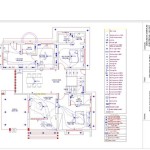Emergency Action Plan Example for Athletic Training
An Emergency Action Plan (EAP) is a critical document for any athletic training program or organization involved in sports. It outlines the procedures and protocols to be followed in the event of a medical emergency involving athletes, staff, or spectators. The effective implementation of an EAP can significantly impact the outcome of such situations, potentially saving lives and minimizing long-term complications. This article provides a comprehensive example of an EAP for athletic training, highlighting key components and considerations for its development and execution.
The primary goal of an EAP is to ensure a coordinated and efficient response to medical emergencies. This involves pre-planning, clear communication, designated roles, and readily available resources. A well-designed EAP is specific to the venue and the type of athletic activity being conducted, accounting for factors such as access to emergency medical services (EMS), the presence of on-site medical personnel, and the availability of necessary equipment.
Creating a comprehensive EAP requires collaboration among various stakeholders, including athletic trainers, team physicians, coaches, administrators, and local EMS providers. This collaborative approach ensures that the plan is realistic, practical, and tailored to the specific needs of the athletic program. Regular review and practice drills are essential to maintain the effectiveness of the EAP and to identify areas for improvement.
Key Point 1: Essential Components of an Emergency Action Plan
An effective EAP typically includes several essential components that address different aspects of emergency response. These components ensure a systematic and organized approach to managing medical emergencies.
Personnel and Roles: Clearly defined roles and responsibilities are crucial for a coordinated response. The EAP should identify individuals responsible for specific tasks, such as activating EMS, providing initial medical care, controlling the scene, and communicating with relevant parties. Examples of roles include:
* Team Physician/Medical Director: Provides overall medical oversight and guidance. * Athletic Trainer: Responsible for on-site medical care, injury assessment, and treatment. * Coach: Assists with scene control, communication, and athlete management. * Designated EMS Contact: Responsible for contacting and coordinating with EMS personnel. * Venue Supervisor: Oversees the overall safety and security of the venue.Each role should have a corresponding checklist of duties to ensure that all critical tasks are addressed during an emergency.
Communication Procedures: Clear and effective communication is paramount in any emergency situation. The EAP should outline specific communication protocols, including:
* Methods of communication: Cell phones, landlines, radios, or pre-determined signals. * Contact information: Updated contact lists for all key personnel, EMS, hospitals, and emergency contacts for athletes. * Information to be relayed to EMS: Location of the emergency, nature of the injury or illness, current condition of the athlete, and any immediate care being provided. * Designated communication person: One individual should be responsible for coordinating communication with EMS and other relevant parties.Use of standardized communication templates or scripts can help ensure that all necessary information is conveyed accurately and efficiently.
Emergency Equipment and Supplies: The EAP should specify the location and availability of essential medical equipment and supplies. This includes:
* Automated External Defibrillator (AED): Location, maintenance schedule, and trained personnel who can operate it. * Emergency medications: Epinephrine auto-injectors (EpiPens) for allergic reactions, inhalers for asthma, and other medications as prescribed by team physicians. * First aid kit: Comprehensive kit containing bandages, antiseptic wipes, gauze, splints, and other essential supplies. * Spinal immobilization equipment: Spine boards, cervical collars, and head immobilization devices for suspected spinal injuries. * Oxygen: Oxygen tank and delivery system for athletes experiencing respiratory distress.Regular inventory and maintenance of emergency equipment are crucial to ensure its readiness for use.
Venue-Specific Information: The EAP should be tailored to the specific venue where athletic activities take place. This includes:
* Location of emergency exits: Clearly marked and easily accessible exits for evacuation. * Access points for EMS: Designated entry points for ambulances and other emergency vehicles. * Location of emergency equipment: Clearly marked locations for AEDs, first aid kits, and other emergency supplies. * Venue map: A map of the venue showing key locations, such as emergency exits, access points, and medical facilities.Venue-specific information should be readily available to all personnel involved in the EAP.
Key Point 2: Developing a Venue-Specific Emergency Action Plan
Creating a venue-specific EAP requires a thorough assessment of the unique characteristics and potential hazards of each location where athletic activities are conducted. This process ensures that the plan is tailored to the specific needs of the venue and the athletes who use it.
Conducting a Site Assessment: A comprehensive site assessment should be conducted to identify potential hazards and logistical challenges. This assessment should include:
* Evaluating accessibility: Assessing the ease of access for EMS vehicles, particularly during inclement weather or crowded events. * Identifying potential hazards: Identifying potential hazards such as uneven terrain, exposed electrical wires, or obstructed pathways. * Mapping emergency routes: Mapping out the most efficient routes for EMS to access the venue and transport injured athletes. * Determining communication capabilities: Assessing the availability of reliable communication systems, such as cell phone service or radio communication.The site assessment should be documented and used to inform the development of the venue-specific EAP.
Customizing the Plan: The EAP should be customized to address the specific needs and characteristics of each venue. This includes:
* Identifying unique risks: Recognizing potential risks specific to the venue, such as proximity to water bodies, steep inclines, or environmental hazards. * Developing specific protocols: Developing protocols for managing specific emergencies that may occur at the venue, such as drowning incidents or heat-related illnesses. * Ensuring adequate staffing: Ensuring that there are sufficient medical personnel and trained responders present at the venue to handle potential emergencies. * Establishing communication networks: Establishing communication networks with local EMS providers and hospitals to ensure a coordinated response.The customized EAP should be clearly documented and easily accessible to all relevant personnel.
Example Scenario: Soccer Field EAP Adaptations
Consider a soccer field located on a university campus. The general EAP template will need adaptations such as:
* Designating specific individuals as AED carriers during games and practices, given the field's size. * Identifying the nearest accessible vehicle entrance for EMS based on the specific field location on campus. * Considering the impact of weather conditions (heat, rain) on access routes and potential medical emergencies (heat exhaustion, lightning strikes). * Establishing a designated staging area for EMS vehicles to avoid obstructing pedestrian traffic.These adaptations ensure the generic EAP is realistically applicable to this specific venue.
Key Point 3: Training, Review, and Revision of the EAP
An EAP is only as effective as the training and preparation of the individuals who are responsible for its implementation. Regular training, review, and revision are essential to ensure that the EAP remains current, relevant, and effective.
Emergency Response Training: All personnel involved in the EAP should receive comprehensive training in emergency response procedures. This training should include:
* First aid and CPR/AED certification: All personnel should be certified in first aid, CPR, and AED use. * EAP procedures: Training on the specific procedures outlined in the EAP, including communication protocols, emergency equipment use, and scene management. * Scenario-based drills: Practice drills that simulate common medical emergencies, allowing personnel to practice their roles and responsibilities. * Specific sport-related injuries and illnesses: Training focused on recognizing and managing injuries and illnesses commonly associated with the specific sport.Regular refresher training should be provided to ensure that personnel maintain their skills and knowledge.
Regular Review and Revision: The EAP should be reviewed and revised on a regular basis, typically at least annually or more frequently if necessary. This review should include:
* Assessing the effectiveness of the plan: Evaluating the effectiveness of the EAP based on past experiences and feedback from personnel. * Updating contact information: Ensuring that all contact information for key personnel, EMS, and hospitals is current and accurate. * Revising procedures: Updating procedures to reflect changes in best practices, new equipment, or changes in venue conditions. * Communicating changes: Communicating any changes to the EAP to all relevant personnel and ensuring that they are trained on the updated procedures.The review and revision process should involve collaboration among all stakeholders, including athletic trainers, team physicians, coaches, and administrators.
Documentation: All aspects of the EAP, including the plan itself, training records, review dates, and revision notes, should be thoroughly documented. This documentation provides a record of the efforts undertaken to ensure the safety and well-being of athletes and others involved in athletic activities. This documentation is also critical in the event of a legal challenge.
Effective implementation of an Emergency Action Plan requires a commitment to pre-planning, clear communication, comprehensive training, and ongoing review. By following these guidelines, athletic training programs can create a safe and supportive environment for athletes, minimizing the risk of serious injury and ensuring a timely and effective response to medical emergencies.
Emergency Action Plans

Mckinley High School Emergency Action Plan Sportshigh Com

Sports Medicine Emergency Action Plans

Emergency Action Plans Korey Stringer Institute
Emergency Action Plans

Emergency Action Plan Template 9 Free Sample Example Format
Emergency Action Plans

Emergency Action Plan Template 9 Free Sample Example Format

High School Emergency Action Plan How To Create A This Hi Template Plans

General Emergency Action Plan University Of At Dallas








